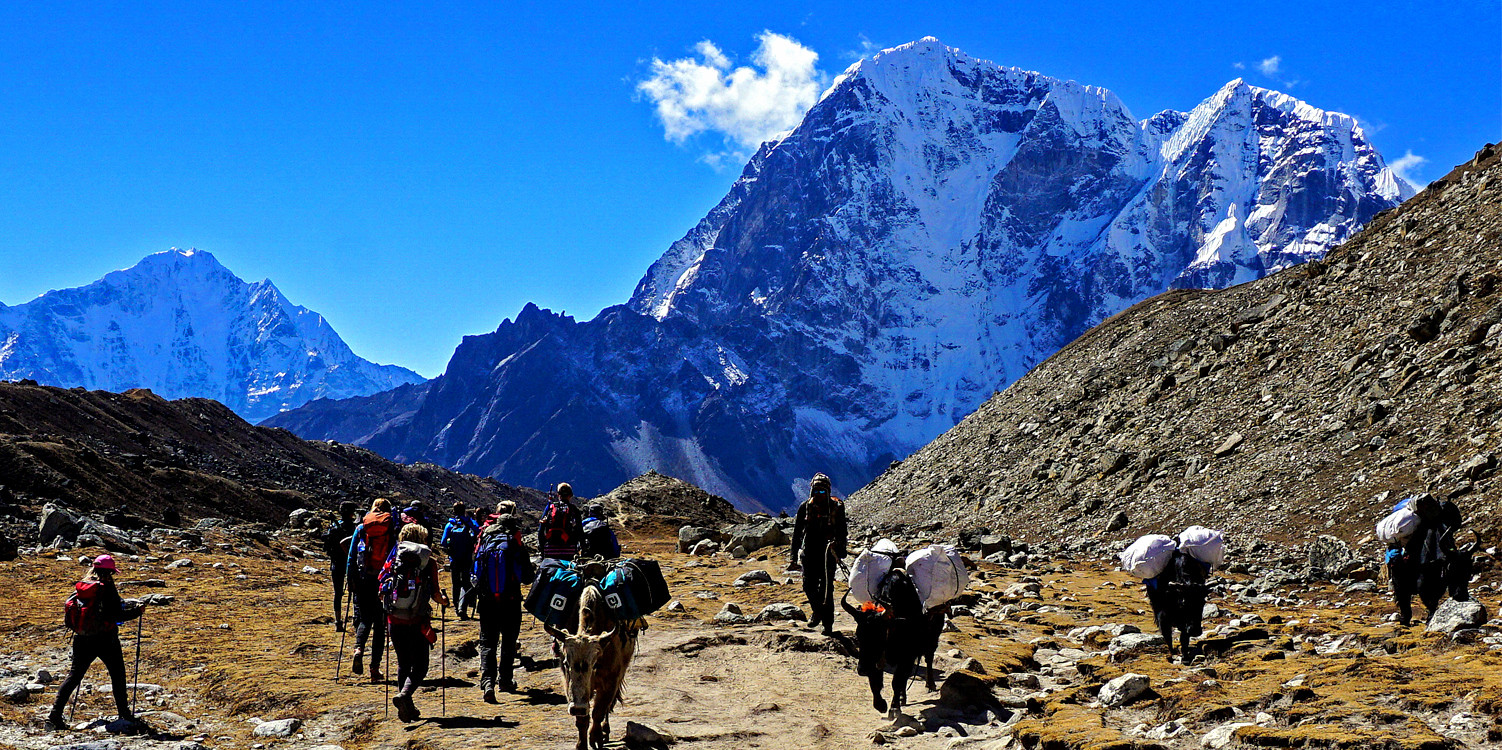Poon Hill Trek
The Poon Hill Trek is one of the most accessible and widely loved treks in Nepal’s Annapurna region. It offers breathtaking views of snow-capped peaks while providing an immersive experience of the region's rich local culture. Here's a closer look at why the Poon Hill Trek is a favorite for both beginners and experienced trekkers:
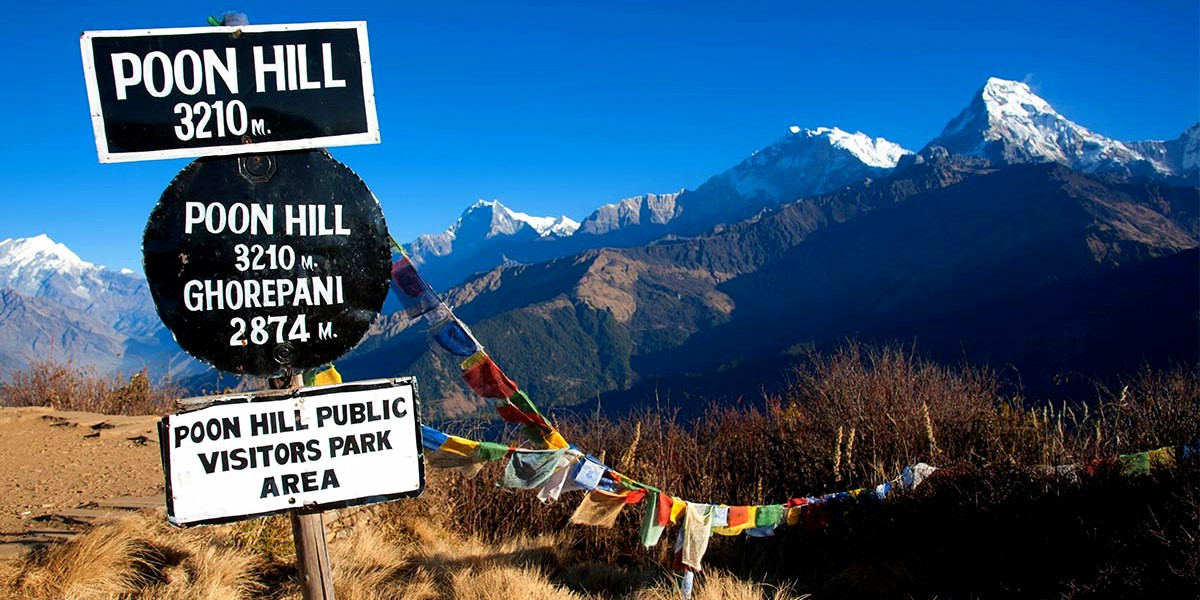
Overview
-
Duration: 4–5 days
-
Difficulty: Easy to moderate
-
Maximum Altitude: 3,210 meters (10,531 feet)
-
Best Season: Spring (March to May) and Autumn (September to November)
Highlights
-
Panoramic Sunrise Views: Poon Hill is famous for its spectacular sunrise, where the early light beautifully illuminates the Annapurna and Dhaulagiri ranges.
-
Rhododendron Forests: During spring, the trails are especially stunning, as they pass through vibrant rhododendron forests in full bloom.
-
Charming Villages: The trek winds through picturesque villages inhabited by the Gurung and Magar communities, offering a glimpse into their rich culture and traditions.
-
Annapurna Conservation Area: This route traverses the Annapurna Conservation Area, home to diverse wildlife and plant species.
The Poon Hill Trek is an ideal option for those wanting to explore the beauty of the Himalayas in a short timeframe. It’s a perfect mix of awe-inspiring landscapes and cultural discovery, making it a fantastic introduction to trekking in Nepal.
Langtang Valley Trek
The Langtang Valley Trek is a mesmerizing journey into one of Nepal’s most scenic and easily accessible trekking regions. Located just north of Kathmandu, this trek offers a perfect blend of breathtaking mountain landscapes and rich cultural experiences, all within a relatively short timeframe. Known as the "Valley of Glaciers Trek," it is an excellent choice for those with limited time who still wish to immerse themselves in the grandeur of the Himalayas.
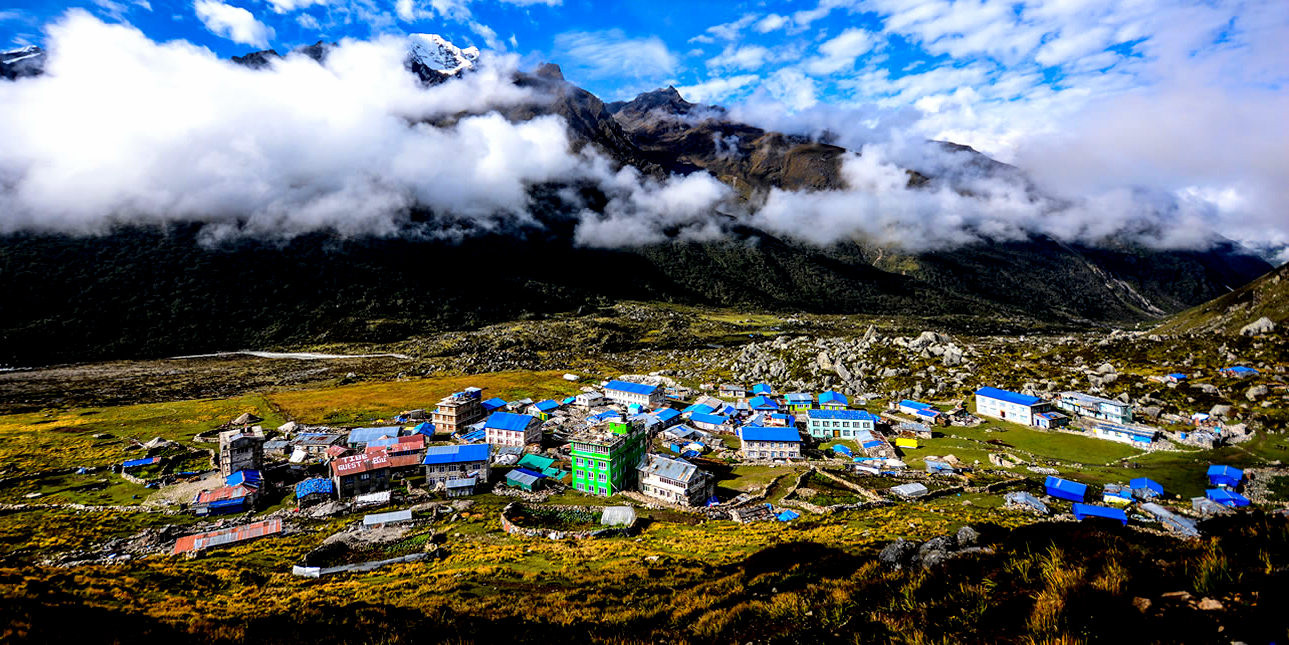
Overview
-
Duration: 7–8 days
-
Difficulty: Moderate
-
Maximum Altitude: 4,984 meters at Tserko Ri (optional)
-
Best Season: Autumn (September to November) and Spring (March to May)
Highlights
- Stunning Mountain Views: The trek offers spectacular views of peaks such as Langtang Ri, Langtang Himal, Lakpa Dorje, and Ganesh Himal.
-
Rich Local Culture: The region, home to the Tamang people, offers a deep cultural experience. Its traditions are closely linked to Tibetan heritage.
-
Diverse Flora and Fauna: The route passes through Langtang National Park, home to wildlife like red pandas, Himalayan tahr, and various bird species.
-
Kyanjin Gompa: A remote Buddhist monastery at an altitude of around 3,800 meters, providing a spiritual and cultural highlight of the trek.
-
Cheese Factory: In Kyanjin Gompa, trekkers can visit a local factory producing delicious yak milk cheese. Itinerary
The Langtang Valley Trek is more than just a hike—it's an opportunity to delve into Nepal's stunning natural beauty and vibrant cultural heritage. Its proximity to Kathmandu, combined with its incredible alpine views and cultural depth, makes it ideal for trekkers seeking an unforgettable Himalayan experience without venturing too far off the beaten path.
Khopra Danda Trek
The Khopra Danda Trek, also known as the Khopra Ridge Trek, is a hidden gem in Nepal’s Annapurna region. Offering a quieter and more off-the-beaten-path alternative to the busier trekking routes, this journey is perfect for those seeking stunning mountain views and a peaceful, immersive experience in nature. With breathtaking vistas of Annapurna South, Dhaulagiri, and Nilgiri, the trek is both visually rewarding and culturally enriching.
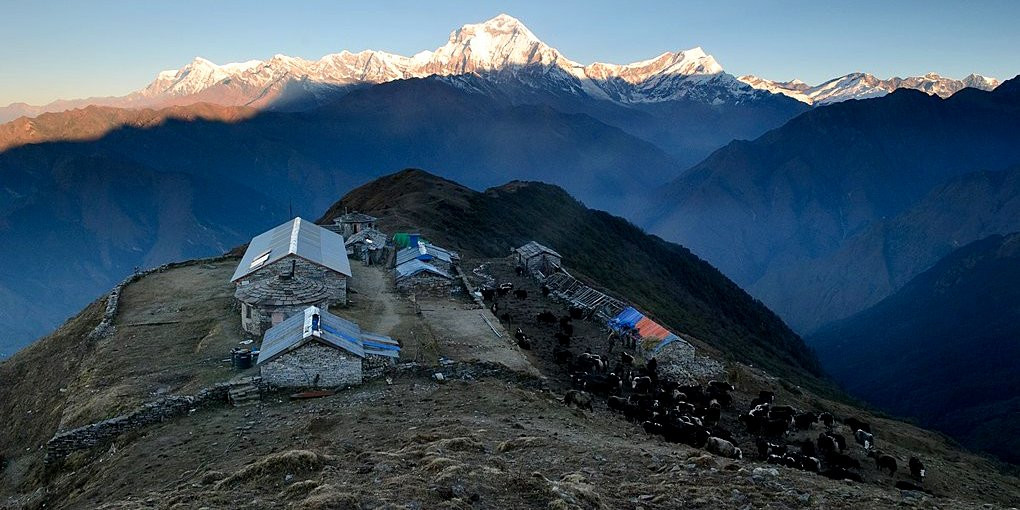
Overview
-
Duration: 7–8 days
-
Difficulty: Moderate
-
Maximum Altitude: 3,660 meters (12,007 feet) at Khopra Ridge
-
Best Season: Autumn (September to November) and Spring (March to May)
Highlights
-
Panoramic Mountain Views: From Khopra Ridge, enjoy sweeping views of the Annapurna range, Dhaulagiri, and other towering Himalayan peaks.
-
Less-Crowded Trails: This trek offers a more tranquil experience, with paths that lead through untouched landscapes far from the usual crowds.
-
Cultural Encounters: Pass through small, traditional Gurung and Magar villages where you can connect with locals and experience their way of life.
-
Natural Beauty: Trek through lush rhododendron forests, alpine meadows, and high-altitude terrain, showcasing the region’s diverse landscapes.
-
Community Lodges: Stay in community-managed lodges that provide a warm welcome, and authentic local food, and help support the local economy.
The Khopra Danda Trek is an excellent choice for adventurers seeking the beauty of the Annapurna region without the crowds. It offers a perfect balance of stunning natural scenery, cultural immersion, and a sense of solitude, making it an unforgettable trekking experience for those exploring Nepal’s hidden treasures.
Helambu Trek
The Helambu Trek is a delightful short trekking experience that provides a quick getaway into the stunning landscapes of the Himalayas near Kathmandu. Renowned for its natural beauty and cultural richness, this trek is perfect for those with limited time who still want to enjoy the charm of Nepal’s mountains and traditions. The trail takes you through diverse landscapes—lush forests, green valleys, mountain streams, and highland villages—offering a serene and quieter Himalayan adventure.
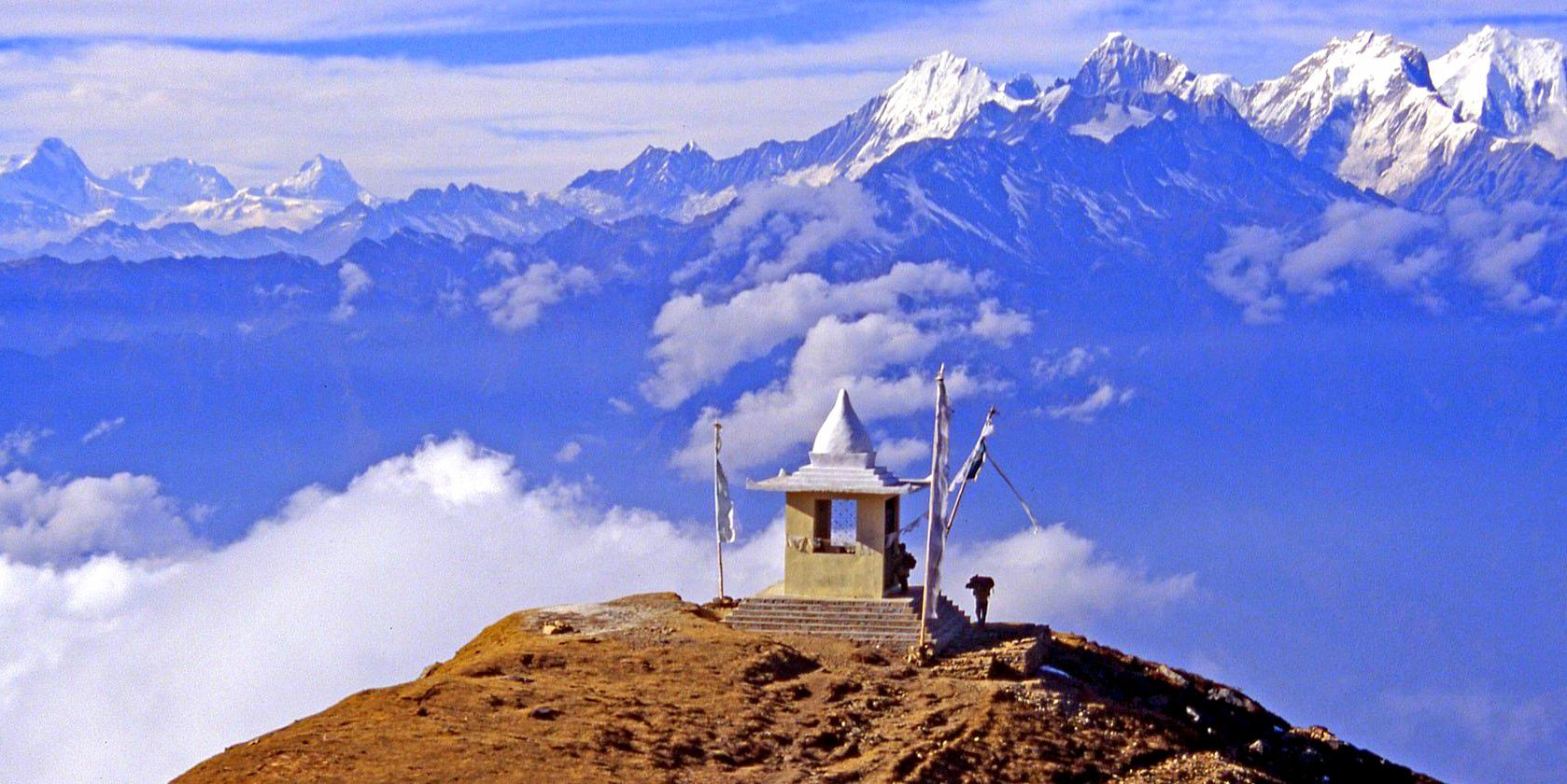
Overview
-
Duration: 5–7 days
-
Difficulty: Easy to moderate
-
Maximum Altitude: 3,650 meters (11,975 feet) at Tharepati Pass
-
Best Season: Autumn (September to November) and Spring (March to May)
Highlights
-
Diverse Landscapes: Journey through rhododendron forests, bamboo groves, and open alpine meadows.
-
Cultural Experience: Explore the unique culture and traditions of the Hyolmo people, adding a rich cultural dimension to the trek.
-
Proximity to Kathmandu: One of the most accessible treks, starting just an hour’s drive from Kathmandu.
-
Peaceful Trails: Unlike the busy trails in Annapurna or Everest, the Helambu Trek offers solitude and tranquility.
-
Scenic Mountain Views: Enjoy panoramic views of Langtang Lirung, Ganesh Himal, and the Jugal Himal range.
The Helambu Trek is an excellent choice for anyone seeking a short yet fulfilling Himalayan adventure. With its combination of breathtaking natural beauty and cultural immersion, it’s a wonderful way to explore the quieter trails of Nepal. Ideal for trekkers looking for a peaceful, enriching, and easily accessible experience, this trek captures the essence of the Himalayas without the need for extensive time or preparation.
Tamang Heritage Trail
The Tamang Heritage Trail is a captivating trekking experience that provides an in-depth look at the rich cultural heritage of the Tamang people, an indigenous community with strong Tibetan roots, living in the central Himalayan region of Nepal. This trek is not just about stunning mountain landscapes in the Langtang region but also a chance to immerse yourself in the vibrant traditions, lifestyle, and spiritual practices of the Tamang community.
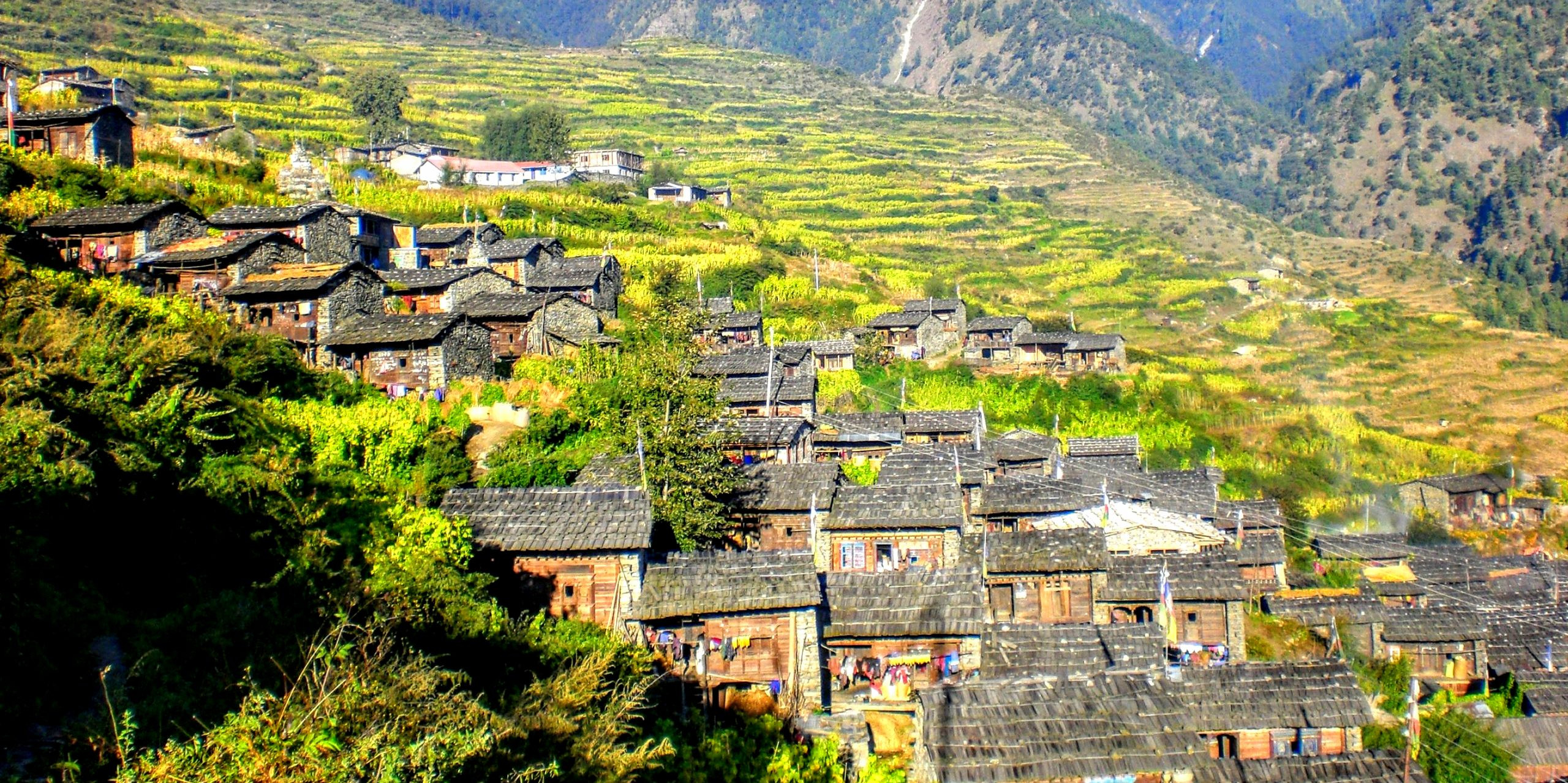
Overview
-
Duration: 7–9 days
-
Difficulty: Moderate
-
Maximum Altitude: 3,165 meters (10,383 feet) at Nagthali
-
Best Season: Spring (March to May) and Autumn (September to November)
Highlights
-
Cultural Immersion: Stay in traditional Tamang villages, engage with local communities, and learn about their Buddhist practices and daily lives.
-
Breathtaking Scenery: Marvel at the stunning views of the Langtang Himalayas, including Langtang Lirung, Ganesh Himal, and the Tibetan mountain range.
-
Natural Hot Springs: Relax at the natural hot springs in Tatopani, which are believed to have healing properties.
-
Historical Exploration: Visit ancient monasteries and local shrines that play a significant role in the spiritual lives of the Tamang people.
-
Local Cuisine: Enjoy traditional Tamang dishes, such as dhido (a hearty porridge) and thukpa (a flavorful noodle soup).
The Tamang Heritage Trail is more than just a trek—it’s a journey into the heart of Nepalese culture and the lives of the Tamang people. With its mix of awe-inspiring Himalayan scenery, unique cultural interactions, and rejuvenating hot springs, this trek promises a rich and fulfilling experience that goes beyond physical adventure to touch the spirit.
Annapurna Community Trek
The Annapurna Community Trek, also known as the Mohare Danda Trek, is a hidden gem in Nepal’s Annapurna region. This trek is part of a community-based initiative designed to improve the livelihoods of local residents while offering trekkers an alternative to the busier routes. With spectacular views of the Annapurna and Dhaulagiri ranges, along with meaningful cultural interactions, this trek provides a unique and rewarding experience for those looking to explore Nepal in a more sustainable and authentic way.
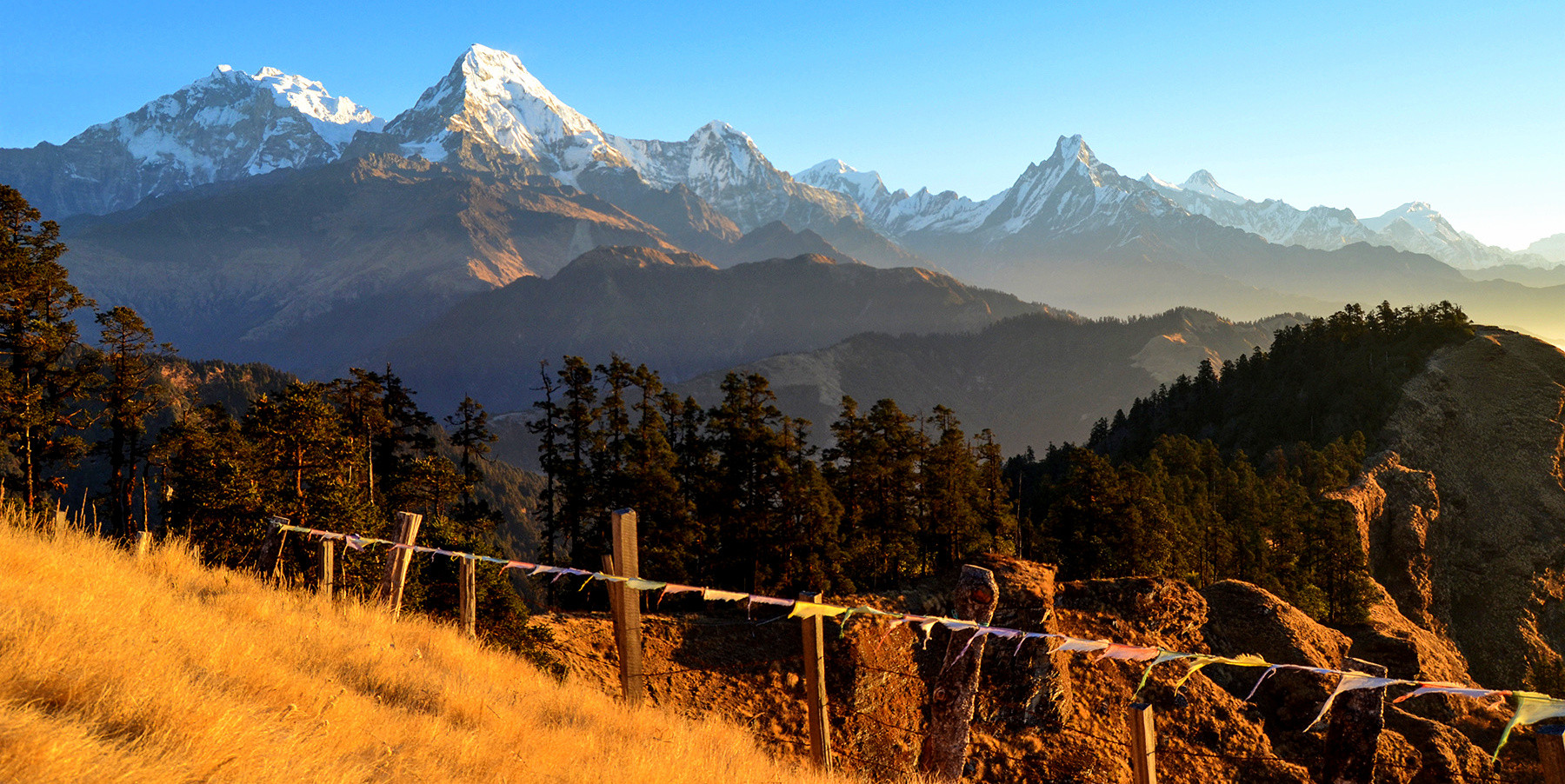
Overview
-
Duration: 5–6 days
-
Difficulty: Moderate
-
Maximum Altitude: 3,300 meters (10,826 feet) at Mohare Danda
-
Best Season: Spring (March to May) and Autumn (September to November)
Highlights
-
Community Involvement: Managed by local communities, this trek directly benefits local schools, infrastructure, and sustainable practices.
-
Spectacular Mountain Views: Witness panoramic vistas of iconic peaks like Annapurna South, Machapuchare (Fishtail), and Dhaulagiri.
-
Rich Biodiversity: The trail leads through vibrant rhododendron forests, oak woodlands, and bamboo groves, home to diverse plant and animal life.
-
Cultural Interaction: Connect with the Magar and Gurung communities, learning about their traditions, lifestyle, and daily activities.
-
Eco-Friendly Lodges: Stay in eco-lodges and community-run teahouses designed to minimize environmental impact.
The Annapurna Community Trek is more than just a trek; it’s a meaningful journey that combines awe-inspiring natural beauty with the opportunity to make a positive impact on local communities. Perfect for trekkers looking to immerse themselves in Nepal’s culture and landscapes while supporting sustainable tourism, this trek is a fulfilling and unforgettable experience in the Himalayas.
Health and Safety for Easy Treks in Nepal
Easy treks in Nepal, it’s crucial to consider health and safety measures to ensure a smooth and enjoyable experience. Here are some key health and safety tips tailored for trekkers:
Acclimatization and Altitude Sickness
-
Even on easy treks, you might ascend to heights where altitude sickness can be a concern. Understand the symptoms, which can include headaches, nausea, and dizziness.
-
Take it slow, especially on treks that reach higher elevations like Poon Hill or the Langtang Valley. Allow your body time to adjust to the altitude.
Travel Insurance
- Always have travel insurance that covers trekking activities up to the maximum altitude you plan to reach. Ensure it includes provisions for medical emergencies and evacuation.
Vaccinations and Health Precautions
-
Visit a travel clinic before your trip to discuss necessary vaccinations, which might include Hepatitis A and B, Typhoid, and Tetanus.
-
Consider bringing medication for common issues like travelers’ diarrhea and altitude sickness.
Drinking Water Safety
-
Always drink purified or bottled water. Avoid drinking water directly from taps or streams as it could be contaminated.
-
Carry water purification tablets or a water filter to ensure you have access to safe drinking water during your trek.
Food Safety
-
Eat well-cooked meals and avoid raw vegetables and salads unless you are sure they have been cleaned with purified water.
-
Opt for freshly cooked food and be cautious with street food or food that has been sitting out for long periods.
Physical Preparation
-
While labeled as easy, these treks still require a good level of physical fitness. Engage in regular exercise prior to your trip, focusing on cardiovascular workouts, strength training, and hikes that include uphill and downhill walking.
-
Break in your hiking boots before the trek to avoid blisters.
Packing Essentials
-
Bring along a first-aid kit that includes band-aids, antiseptic, tape, and pain relievers.
-
Pack sun protection, including sunscreen, sunglasses, and a wide-brimmed hat, as the UV levels can be high even on cloudy days.
- Ensure you have enough layers to deal with changing weather conditions, including a waterproof jacket.
Guide and Porter Support
-
Even on easier treks, having a guide can enhance your experience and provide added safety. Guides are invaluable for their knowledge of the trails, weather conditions, and local culture.
-
Consider hiring a porter if carrying a backpack might be too strenuous. This support helps local economies and makes your trek more enjoyable.
Emergency Preparedness
-
Familiarize yourself with the symptoms of common trek-related health issues and know basic first aid.
-
Carry a mobile phone and save emergency contact numbers. Network coverage can be spotty in remote areas, so consider renting a satellite phone for areas with no cell service.
Respect Local Customs and Environment
-
Be aware of and respect local customs and traditions. Dress modestly and ask permission before taking photos of people.
-
Follow Leave No Trace principles to minimize your impact on the environment. Dispose of waste properly and respect wildlife and natural resources.
By following these health and safety guidelines, you can ensure that your trekking experience in Nepal is not only memorable but also secure and comfortable.
Tips for Easy Treks in Nepal
Trekking in Nepal, even on beginner-friendly trails, requires thoughtful preparation to ensure a safe and enjoyable adventure. Here are some essential tips to help you make the most of your easy treks in Nepal:
Choose the Right Season
-
Best Seasons: The ideal times for trekking are spring (March to May) and autumn (September to November). These seasons offer clear skies, stable weather, and spectacular mountain views.
-
Avoid Monsoon: The monsoon season (June to August) brings heavy rains, slippery trails, and limited visibility.
-
Winter Challenges: Winter (December to February) can be very cold, especially at higher altitudes, but it’s still possible to trek if you’re prepared for low temperatures.
Select an Appropriate Trek
-
Match the trek to your fitness level, experience, and interests.
-
Popular easy treks include the Poon Hill Trek and the Tamang Heritage Trail, both offering manageable routes with rewarding views and cultural experiences.
Pack Appropriately
-
Essentials: Pack in layers to adjust to changing temperatures, and bring a waterproof jacket, sturdy trekking boots, a hat, and gloves. A comfortable backpack with a rain cover is a must.
-
Health and Safety: Don’t forget a first aid kit, water purification tablets, sunscreen, sunglasses, and a hat to protect yourself from the sun, especially at higher altitudes.
Stay Hydrated and Eat Well
-
Hydration: Drink plenty of water throughout your trek to avoid dehydration, which can be more common at altitude.
-
Meals: Eat energy-rich meals, especially those high in carbohydrates, to sustain your energy for long walking days.
Acclimatize Properly
-
Even on easier treks, the altitude can affect your body.
-
Take your time to adjust, listen to your body, and rest as needed.
-
Watch out for altitude sickness symptoms like headaches, nausea, or dizziness. If symptoms worsen, descend to a lower altitude immediately.
Hire a Guide or Porter
-
While easy treks can often be done independently, hiring a local guide or porter can enrich your experience.
-
Benefits of a guide: They provide cultural insights, navigate language barriers, and enhance your safety on the trail.
Respect Local Customs and Environment
-
Learn a few basic Nepali phrases to communicate with locals and show respect.
-
Be mindful of local customs and dress modestly, especially near religious sites.
-
Always carry out your trash and aim to minimize your environmental impact.
Travel Insurance
-
Ensure your travel insurance covers trekking activities, including emergency evacuation and hospitalization.
-
Medical facilities in remote areas can be basic, so having proper coverage is essential.
Stay Connected
-
While many trekking routes have mobile network coverage, it can be unreliable.
-
For more remote areas, consider renting a satellite phone to ensure you have access to emergency communication.
Enjoy the Experience
-
Take your time to savor the stunning landscapes, connect with the locals, and immerse yourself in Nepal’s rich culture.
-
Remember, trekking is not just about reaching your destination—it’s about enjoying the journey along the way.
By following these tips, you’ll be well-prepared for an easy trekking adventure in Nepal. Whether it’s the breathtaking natural beauty or the warm hospitality of the locals, Nepal’s trails promise memories that will last a lifetime.
Ideal Time for Easy Treks in Nepal
The best time to go on easy treks in Nepal is during the country’s two main trekking seasons: spring and autumn. These periods provide the most favorable weather conditions, offering clear mountain views and comfortable trekking experiences.
-
Spring (March to May): Spring is a wonderful time for trekking in Nepal, thanks to warm weather and the vibrant blooming of wildflowers, especially the rhododendrons. The hills and lower mountain regions are blanketed in colorful blossoms, creating a stunning backdrop. Temperatures during this season are comfortably warm at lower altitudes and moderately cold at higher elevations. The weather is generally stable, and the trails are dry and easy to navigate.
-
Autumn (September to November): Autumn is widely regarded as the best season for trekking in Nepal. Following the monsoon, the air is crisp and clean, and the skies are typically clear, offering stunning views of the Himalayas. The temperatures are cool and comfortable, ideal for walking. This is also the peak trekking season, so while the trails may be busier, the conditions are at their best.
Other Considerations
-
Winter (December to February): Winter treks are possible at lower altitudes, where temperatures remain mild, but higher elevations can be extremely cold, and snow may block some trails.
-
Monsoon (June to August): Trekking during monsoon season can be challenging due to heavy rains, slippery trails, and leeches. Mountain views are often obscured by clouds. However, mornings can sometimes offer clear skies before the rain begins later in the day. Fewer trekkers on the trails during this period may appeal to those seeking solitude.
Choosing the right season for your trek can greatly enhance your experience, allowing you to fully enjoy Nepal’s stunning natural beauty and cultural richness. Spring and autumn are undoubtedly the best times for trekking, providing the perfect balance of pleasant weather, clear views, and lively landscapes.
Easy treks in Nepal offer a fantastic opportunity for beginners and those with limited time to experience the stunning beauty of the Himalayas while connecting with the rich local culture. Treks like the picturesque Poon Hill and the culturally immersive Tamang Heritage Trail are both accessible and rewarding, showcasing breathtaking landscapes and authentic interactions with local communities. With ideal weather conditions in spring and autumn, these treks provide the perfect blend of adventure, serenity, and cultural discovery. Whether you’re seeking natural beauty, relaxation, or a taste of Nepalese traditions, easy treks in Nepal promise unforgettable memories in one of the world’s most enchanting destinations.
FAQs for Easy Treks in Nepal
Q: What are some of the best easy treks in Nepal?
A: Popular easy treks include the Poon Hill Trek, Langtang Valley Trek, Helambu Trek, Tamang Heritage Trail, and the Annapurna Community Trek. These routes offer scenic beauty, cultural encounters, and are well-suited for beginners.
Q: Do I need a guide for easy treks in Nepal?
A: While not mandatory, a guide can enhance your experience by providing local insights, ensuring safety, and assisting with navigation. Guides are especially recommended for those new to the region.
Q: What is the best time to go on easy treks in Nepal?
A: The optimal trekking seasons are during the spring (March to May) and autumn (September to November), featuring stable weather, clear skies, and moderate temperatures.
Q: What should I pack for an easy trek in Nepal?
A: Pack sturdy trekking boots, layered clothing, a waterproof jacket, a good backpack, water purification supplies, sunscreen, sunglasses, and a basic first aid kit.
Q: How do I prevent altitude sickness on these treks?
A: To minimize the risk, ascend slowly, stay hydrated, avoid alcohol, and consider extra acclimatization days if trekking to higher altitudes.
Q: Are permits required for trekking in Nepal?
A: Yes, treks usually require a TIMS card and regional permits like the Annapurna Conservation Area Permit or the Langtang National Park permit. These can be arranged through trekking agencies or local tourism offices.
Q: Can families with children do these treks?
A: Absolutely, easy treks are suitable for families. Ensure the trek’s distance and elevation are manageable for your children.
Q: How do I deal with emergencies on the trail?
A: Carry a first aid kit and a communication device. If you feel unwell, inform your guide immediately. Ensure your travel insurance includes emergency evacuation and medical services.
Q: What kind of accommodation can I expect on easy treks?
A: Accommodations range from basic teahouses with communal dining to guesthouses with private facilities, and homestays for cultural immersion.
Q: How can I respect local customs and culture during my trek?
A: Dress modestly, seek permission before taking photos, avoid intruding on ceremonies, and learn basic local phrases to engage respectfully with hosts.
For the Nepal tour, please click here.
If you are looking for different kinds of Nepal Tours or Trekking Packages, feel free to contact us.
